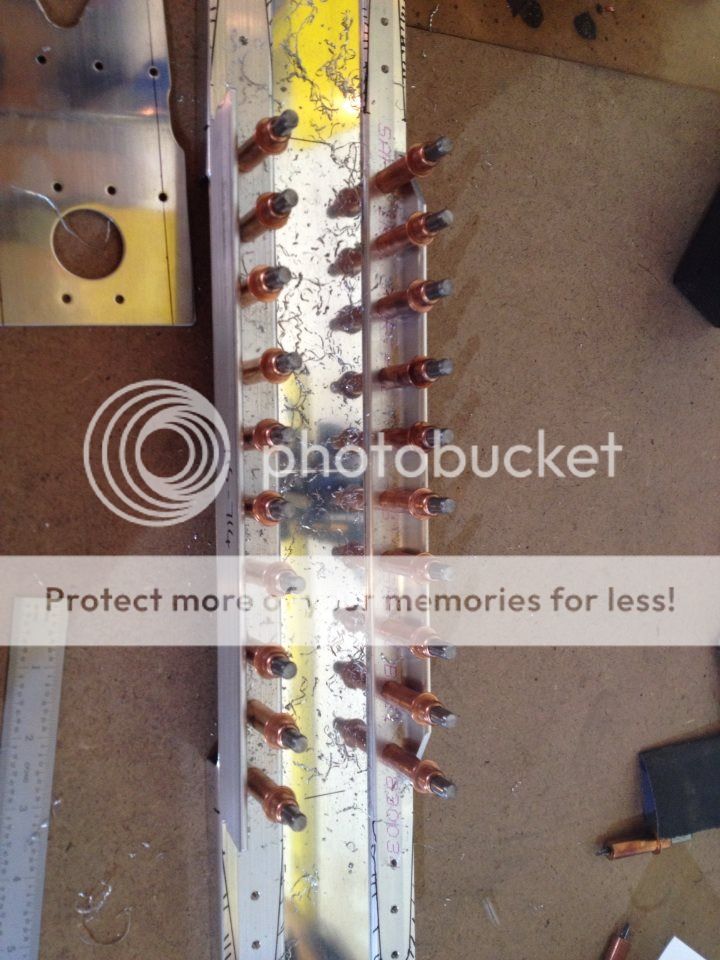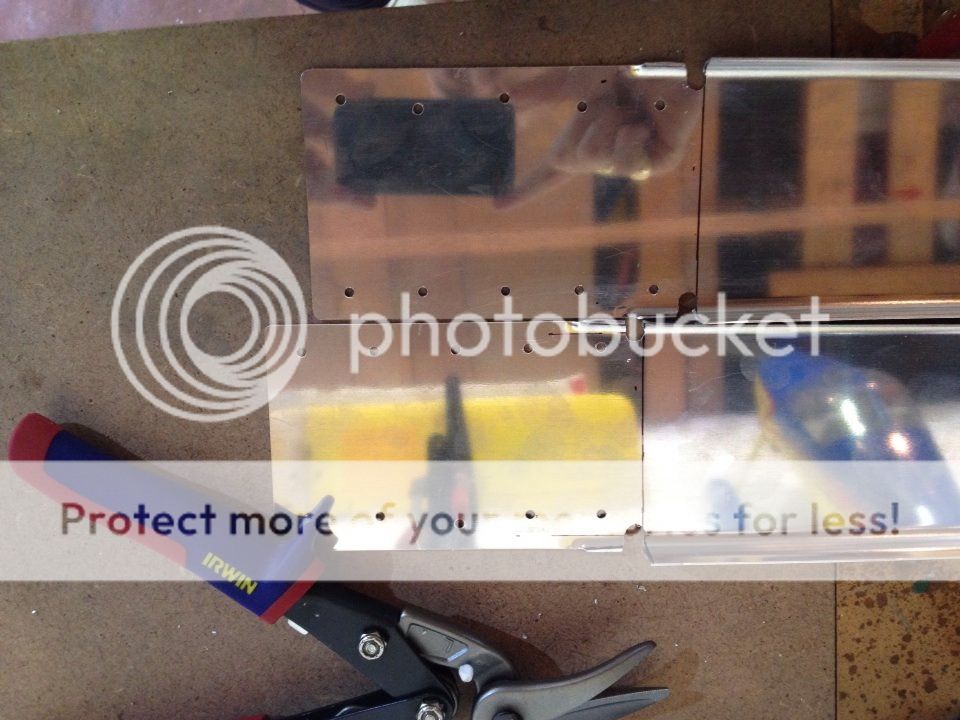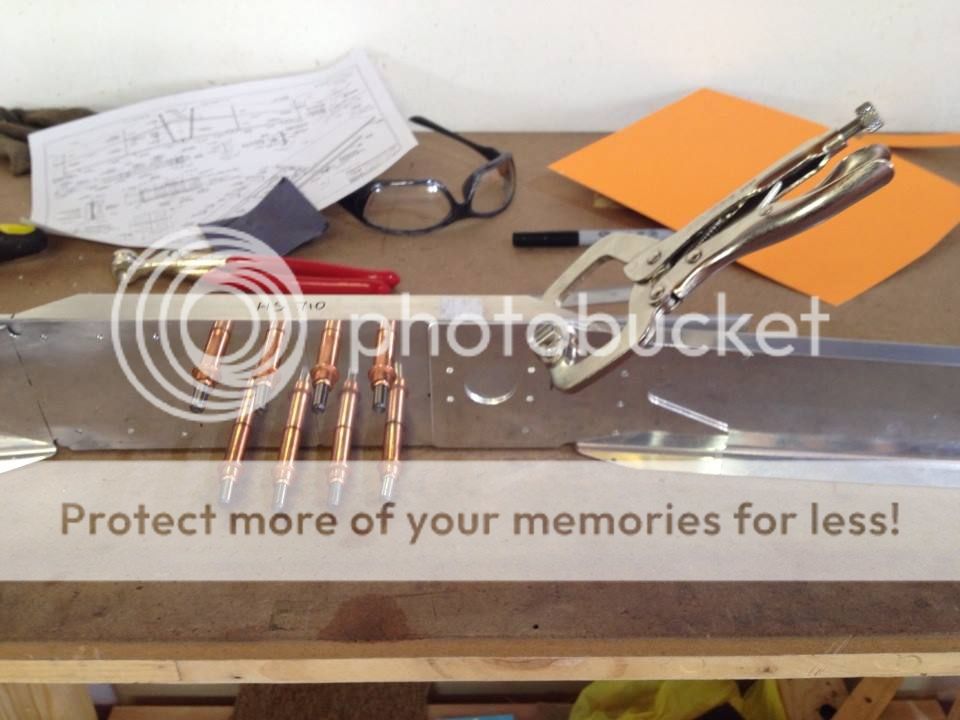A month ago, I hit a snag on the front spar of the HS of my new-build 7, where the edge distance on the holes I drilled in the doubler HS-00001 from HS-710 was very marginal and the spar wasn't straight enough for my liking (see related thread http://www.vansairforce.com/community/showthread.php?t=124011). After a long holiday, my re-ordered parts arrived 3 days ago and I've got to the stage where things went wrong last time (about to match-drill HS-00001 and HS-702). The instructions are a little unclear and look to me like they were probably modified rather than being completely re-written after the doubler was introduced last year to fix the cracking AD. I was about to dive in and try again, but then my wife suggested I post here to ask if anyone has any great suggestions or insights.
The basic issue is that when fixing the position of the doubler it is very hard to see in advance what the edge distance is going to be when the holes outboard of the bend lines are drilled into the "ears", and there is very little room for error. Tiny changes in orientation or positioning can make the edge distance insufficient, and there is inevitably some variation due to the extent to which edges have been smoothed etc. It is tempting to make the bends in HS-710 and HS-714 prior to match-drilling in order to have a better idea of the positioning, but even if I did this it would still be difficult to determine the edge distance before it was too late since the front spar HS-702 is between the 710 and the doubler.
The other, and perhaps related issue, is that the 2 clecos that hold the 710 or 714 to the spar are both close to its center, and they actually allow a fair bit of movement at the end of the spar. So I think that it might be possible to improve upon the suggested procedure of just setting the clecos and match-drilling. I'm certainly going to incorporate a measurement of spar straightness this time!
Any thoughts much appreciated. Part of the problem here is perhaps that this section of the instructions is new so there isn't much accumulated wisdom available yet.
The basic issue is that when fixing the position of the doubler it is very hard to see in advance what the edge distance is going to be when the holes outboard of the bend lines are drilled into the "ears", and there is very little room for error. Tiny changes in orientation or positioning can make the edge distance insufficient, and there is inevitably some variation due to the extent to which edges have been smoothed etc. It is tempting to make the bends in HS-710 and HS-714 prior to match-drilling in order to have a better idea of the positioning, but even if I did this it would still be difficult to determine the edge distance before it was too late since the front spar HS-702 is between the 710 and the doubler.
The other, and perhaps related issue, is that the 2 clecos that hold the 710 or 714 to the spar are both close to its center, and they actually allow a fair bit of movement at the end of the spar. So I think that it might be possible to improve upon the suggested procedure of just setting the clecos and match-drilling. I'm certainly going to incorporate a measurement of spar straightness this time!
Any thoughts much appreciated. Part of the problem here is perhaps that this section of the instructions is new so there isn't much accumulated wisdom available yet.














